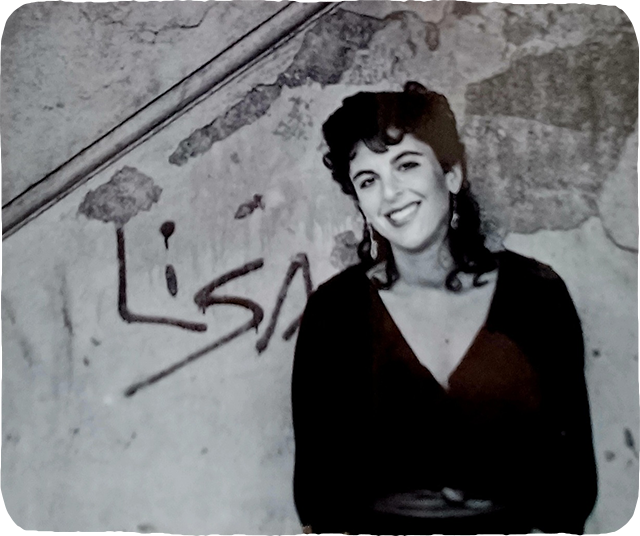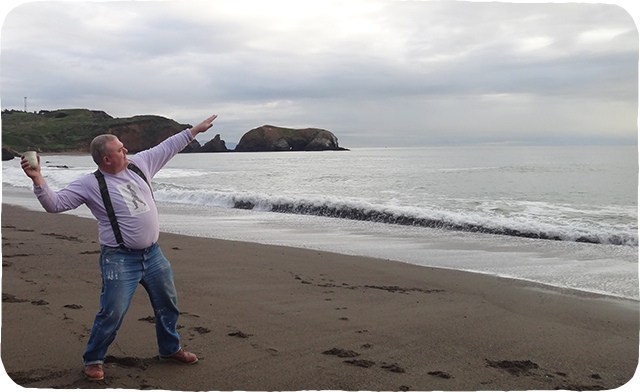These Walls Tell Tales, pt. 6
In “The Visibility Wars,” Rebecca Solnit writes of the ongoing acts of war perpetrated by the United States military against its own land and the people who reside there. From bomb testing to low-altitude fighter jet flyovers, military activity leaves long-lasting scars on the land and the psyche. The Marin Headlands are dotted with these scars and after-images: the steel and concrete gun batteries perched on the hill tops, the roads winding through the hills, the plantings of cypress and eucalyptus shimmering in the wind. Headlands Center for the Arts itself occupies several 1907 US Army barracks buildings, remnants left behind as the strategic value of the site to the military diminished. All this to say that though we might imagine an Artist Residency as a retreat, sheltered from the world, the world is in fact always with us. It is our task (all of us) to build it anew each moment—hopefully with ever more creativity and spaciousness.
Lisa B (Lisa Bernstein) ('91)

“In 1987, I needed photos to promote my upcoming performance art show based on my poem series Kore: After the Battle, at San Francisco’s The Lab This series—still unpublished as a book in 2022, but with almost every poem having appeared in literary journals and anthologies—retells and transforms the myth of Persephone, who was abducted into the underworld, and also grapples with the horrors of my father’s WWII combat experience and the effect of his subsequent PTSD on my young psyche. The acclaimed photographer I was working with, Mikkel Aaland, suggested an outdoor shoot at the Headlands. The eerie and partly decayed military batteries throughout the landscape proved to be a perfect backdrop. Originally built in the early 20th century and put to use in WWII, the batteries still evoked the ghosts of soldiers at war, incongruously summoning distant conflicts into the present amid the foggy beauty of the landscape and its contemporary visitors both wild and human. We happened to find one wall already graffiti’d with my first name. While that particular shot turned out to be too cheery to promote the show, it appeared on the back cover of my first poetry collection from Wesleyan University Press published in 1989. The shoot was the start of my attraction to the Headlands and its Center for the Arts—its ghosts and visitors, landscapes and structures, private creations and shared community. This attraction in turn led to my stint as an Artist in Residence beginning in 1991, and my visits in the decades since to this treasured and elusive place at the edge, where past and present, absence and presence, continue to intermingle.”
Susan Parker ('01)
“I was starting my first week at Headlands as a California Artist in Residence when the World Trade Center towers went down. Someone called on the pay phone in the hallway reporting the news. None of us knew what to do. Later in the day staff members procured a television and put it in one of the offices. We watched, horrified. After a while, we all needed space and time alone. I got on my bike and rode up toward Hawk Hill. There, across the Golden Gate, San Francisco shone bright and beautiful. Along the edge of the roadside cliffs, professional photographers were squatting precariously, their monstrous camera lenses trained on the bridge. I realized they were waiting for a catastrophic explosion. I turned my bike around and raced back to the safety and comfort of the Headlands.”
Ehren Tool ('12)

“The [2012 Thematic Residency, Other Histories, at] Headlands was the first artist residency I had done. I was a bit nervous at how I would be welcomed, as a Marine Corps Veteran. I was pleasantly surprised how kind, interesting, and interested everyone was. It was a very moving experience to spend time in a place that had been a military installation. Decades of soldiers trying to protect their country with weapons pointed to the ocean; now that same space is being used to build community and make art. A space desecrated by the military and reconsecrated by artists. It gave me hope for my own new art path.
“P.S. I did not throw any cups into the ocean.”